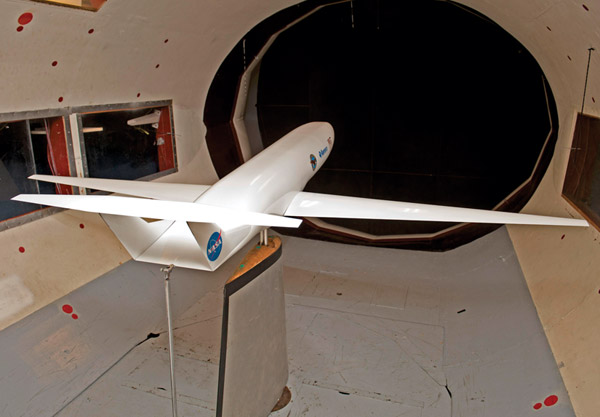Tiny in budget, NASA’s aeronautics R&D has outsized impact
DOI: 10.1063/PT.3.1288
As it works on developing new aircraft that offer enhanced safety, reduced fuel consumption, and lower emissions, NASA’s aeronautics R&D program also is developing technologies to enable a next-generation US air traffic control system and to encourage adoption of unmanned aircraft systems (UASs) for research, law enforcement, and other purposes. It’s a tall order for a program for which President Obama requested just $569.4 million for fiscal year 2012. House appropriators have agreed to provide the full request, $68 million more than Congress dispensed in FY 2011. As PHYSICS TODAY went to press, the Senate Appropriations Committee has not yet moved its version of NASA’s spending bill.
In late August NASA administrator Charles Bolden told the first meeting of an aeronautics roundtable convened by the National Academies that he has been looking throughout NASA’s $18.7 billion budget to find $100 million to add to aeronautics R&D. “In aeronautics terms, $100 million is a fortune,” Bolden said. “I find it interesting that we are begging for pennies for the one industry that has a positive balance of trade, the one industry that continues to put people to work, the one industry that makes us number one in the world. We don’t give it what it’s due.” In 2010 the US aeronautical industry had a trade surplus of $43.6 billion, he said. It also provides nearly 1 million US jobs, including manufacturing and air transport employees.
A program to address UAS-specific aeronautics R&D was begun this year at NASA. The Federal Aviation Administration is developing policies to ensure that privately operated unmanned aircraft do not threaten air transport and other uses of airspace. A final rule is expected to be issued next year. According to the FAA, the design of many UASs makes them difficult to see, and adequate technology for detection and avoidance is lacking. Government agencies, universities, and other public institutions have already received the FAA licenses to operate UASs. But the US will lose to other nations the rapidly developing market for UASs if regulatory issues aren’t addressed quickly for private-sector use, warned Steven Pennington, director of bases, ranges, and airspace for the US Air Force and one of 25 participants in the roundtable.
Bolden asked panel members for advice on which NASA flight-test facilities are exemplary and should remain open and which should be closed. “We’re not very good at downsizing and right-sizing,” he said, a reference to the inevitable opposition NASA receives from members of Congress whose districts or states will be affected by proposed facility closures or layoffs.
Improving fuel efficiency and reducing emissions are other major thrusts of NASA’s aeronautics program. US major airlines and military aircraft together consumed more than 24 billion gallons of fuel in 2008, at a cost of about $73 billion, according to Thomas Irvine, NASA deputy associate administrator for aeronautics. Delays in the nation’s congested air traffic system cost airlines and customers tens of billions of dollars annually in wasted time and fuel, so a revamp will be required to accommodate continued growth in demand for air travel. Since 2004 a multiagency effort known as NextGen has been developing a new regime that will automatically maintain safe distances between aircraft; pilots will have the ability to plot the trajectories of flights to maximize fuel efficiency and minimize noise impacts and will also be able to integrate weather forecasts into flight planning. NASA is a major R&D participant in NextGen, scheduled for completion by 2025.

The D8, or double bubble, is designed for fuel efficiency; It has a very wide fuselage to provide extra lift and low-swept wings to reduce drag and weight. A team lead by MIT developed the future subsonic aircraft for NASA. This subscale model is shown in an MIT windtunnel.
NASA/MIT

More about the Authors
David Kramer. dkramer@aip.org




